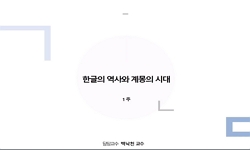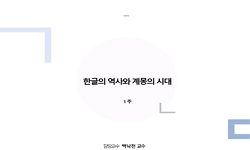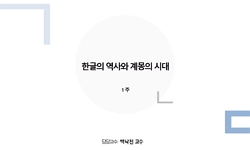들뢰즈와 푸코는 칸트로부터 출발하되 칸트 자신이 설정한 한계 외부로 이어지는 사유의 선(線)을 그려보고자 했던 철학자들이다. “인간이란 무엇인가?”라는 칸트 철학의 근본 물음을 대...
http://chineseinput.net/에서 pinyin(병음)방식으로 중국어를 변환할 수 있습니다.
변환된 중국어를 복사하여 사용하시면 됩니다.
- 中文 을 입력하시려면 zhongwen을 입력하시고 space를누르시면됩니다.
- 北京 을 입력하시려면 beijing을 입력하시고 space를 누르시면 됩니다.
https://www.riss.kr/link?id=A108966227
- 저자
- 발행기관
- 학술지명
- 권호사항
-
발행연도
2024
-
작성언어
-
-
주제어
포스트휴먼 칸트 ; 질 들뢰즈 ; 미셸 푸코 ; 인간의 죽음 ; 초인 ; 계몽 ; 능력 이론 ; posthuman Kant ; Gilles Deleuze ; Michel Foucault ; death of man ; overman ; enlightenment ; doctrine of the faculties
-
KDC
840
-
등재정보
KCI등재
-
자료형태
학술저널
- 발행기관 URL
-
수록면
117-148(32쪽)
- 제공처
-
0
상세조회 -
0
다운로드
부가정보
국문 초록 (Abstract)
들뢰즈와 푸코는 칸트로부터 출발하되 칸트 자신이 설정한 한계 외부로 이어지는 사유의 선(線)을 그려보고자 했던 철학자들이다. “인간이란 무엇인가?”라는 칸트 철학의 근본 물음을 대체하는 두 물음이 이 칸트 내부에서 외부로 이어지는 운동을 인도하는바, 그것은 “인간-형식을 벗어난 주체는 무엇이 될 수 있는가?”와 “인간-형식의 한계를 넘어선 능력은 무엇을 할 수 있는가?”이다. 본고의 목적은 이 같은 칸트를 넘어선, 인간 없는 칸트주의의 기획이 포스트휴먼적 조건 속에서 칸트를 다시 사유하기, 또 역으로 칸트를 통해 포스트휴먼적 세계를 사유하기라는 과제의 단초가 될 수 있는 가능성을 타진하는 것이다. 그러므로 많은 포스트휴머니즘 문헌들에서 발견되는 칸트의 휴머니즘을 겨냥한 비판에 대한 적극적 동조도, 본격적 반(反)비판도 이 글의 관심사는 아니다. 오히려 이 대립 구도 자체의 단순성을 문제화하는 것, 즉 칸트의 철학적 인간학 자체에서 인간을 문제화하거나 인간 너머를 가리키는 벡터를 발굴하고 그것을 재료로 전통적 인간학을 넘어서는 새로운 주체론과 능력론을 전개했던 들뢰즈와 푸코의 작업을 통해 저 대립 구도가 포착하지 못하는 포스트휴매니티와 칸트 철학의 복합적 관계를 숙고하는 것이 본고의 목적이라 하겠다.
다국어 초록 (Multilingual Abstract)
Rather than simply breaking up with Kant, Deleuze and Foucault endeavored to delineate lines of thought that originated from Kant but extended beyond the limits set by Kant himself. Two pivotal inquiries, supplanting the foundational question of Kanti...
Rather than simply breaking up with Kant, Deleuze and Foucault endeavored to delineate lines of thought that originated from Kant but extended beyond the limits set by Kant himself. Two pivotal inquiries, supplanting the foundational question of Kantian philosophy, “What is the human being?” guide this movement from within Kant to without: “What can a subject outside of the human-form be?” and “What can a faculty beyond the limits of the human-form do?”. This paper aims to explore the prospect that such a project of Kantianism beyond Kant could serve as the starting point for the task of rethinking Kant within the context of posthuman conditions and, conversely, contemplating the posthuman world through a Kantian lens. Consequently, this essay is not preoccupied with expressing sympathy for or offering counter-criticisms of the prevailing critiques of Kant’s humanism in numerous posthumanist theories. Instead, the principal objective of this paper is to problematize the oversimplified nature of this binary opposition. In essence, it seeks to elucidate the intricate relationship between posthumanity and Kantian philosophy that eludes the rigid constraints of the confrontational framework. This is accomplished through an examination of the works of Foucault and Deleuze, who, situated within Kant’s philosophical anthropology, identified vectors that problematize the very notion of the human, and employed them to develop new theories of subjectivity and faculties that transcend the conventional boundaries of anthropology.
목차 (Table of Contents)
- Ⅰ. 들어가며: 칸트를 넘어선 칸트주의와 포스트휴먼 칸트라는 괴물의 필요성
- Ⅱ. 칸트 독해에서 푸코와 들뢰즈의 교차점: 인간이라는 이름의 초월적 주체 비판
- Ⅲ. 인간의 죽음 이후의 주체로서의 초인과 ‘바깥’
- Ⅳ. 차이론적 능력 이론: 인간을 벗어난 능력은 무엇을 할 수 있는가?
- Ⅴ. 나가며: 포스트휴먼 칸트(주의)의 물음들
- Ⅰ. 들어가며: 칸트를 넘어선 칸트주의와 포스트휴먼 칸트라는 괴물의 필요성
- Ⅱ. 칸트 독해에서 푸코와 들뢰즈의 교차점: 인간이라는 이름의 초월적 주체 비판
- Ⅲ. 인간의 죽음 이후의 주체로서의 초인과 ‘바깥’
- Ⅳ. 차이론적 능력 이론: 인간을 벗어난 능력은 무엇을 할 수 있는가?
- Ⅴ. 나가며: 포스트휴먼 칸트(주의)의 물음들
- 인용문헌
동일학술지(권/호) 다른 논문
-
9·11과 3·11, 혹은 문학의 그라운드 제로(ground zero)에서
- 한국비평이론학회
- 신형철(Hyoung Cheol Shin)
- 2024
- KCI등재
-
Revisiting the Realism/Modernism Debate: Marxist Thought and the Ethics of Representation
- 한국비평이론학회
- 황혜령(Hyeryung Hwang)
- 2024
- KCI등재
-
- 한국비평이론학회
- 이택광(Taek-Gwang Lee)
- 2024
- KCI등재
-
- 한국비평이론학회
- 정혜욱(Haeook Jeong)
- 2024
- KCI등재





 스콜라
스콜라






